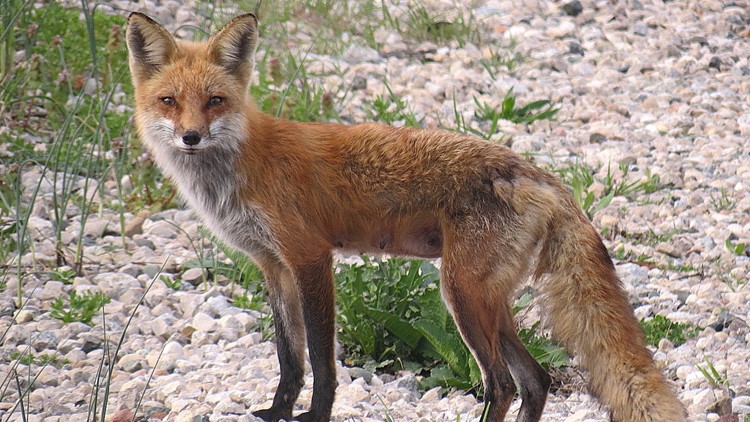COLUMBUS, Ohio — Animals suffering from mange is not an uncommon sight, but the Ohio Department of Natural Resources Division of Wildlife said it’s more prevalent in urban areas like Columbus.
After photos of a fox suffering from mange in the Columbus area recently appeared on social media, 10TV reached out to the division to find out how often this happens and what can be done.
Sarah Schott, a communications specialist at the division of wildlife, said that the pictures of the fox were consistent with the skin disease.
“This is not an unusual case,” she said. “It’s very common in foxes and other wild animals.”
In fact, she said, most of the foxes in Ohio have come in contact with mange. Whether it makes them sick is up to their individual immune system.
Most foxes have a strong enough immune system that they can fight it off, but in urban cities where rodenticide is used, wild animals’ immune systems may be weakened from eating rodents that ingested poison.
“What happens is the foxes are eating the dead rats who have ingested rodenticide and it weakens their immune system. When the fox comes in contact with mange it doesn’t have the immune system to always fight back.”
Schott said that if an animal with mange is spotted, it’s important to note that mange is contagious, and it could be passed on to pets if they come in close contact with the wild animal. The parasitic mite that causes mange can jump from animal to animal.
Foxes have a better chance of fighting it off themselves if they can grow their fur back by the winter, Schott said. They need to be warm when temperatures drop, and they need enough energy to focus on food and hunting.
If the fox looks sickly though, Schott said it can be live trapped and taken to a rehab facility. Another option is to call a licensed nuisance trapper.
You can find a list of currently licensed Commercial Nuisance Wild Animal Control Operators in Ohio here.
The last option reserved for landowners is that if it’s becoming a problem, landowners are able to euthanize the fox themselves.
Those that spot mange on a wild animal should limit their contact and their pet’s contact.
Schott suggested that a way to help wild animals be able to fight back against the disease is by not using rat poison.



